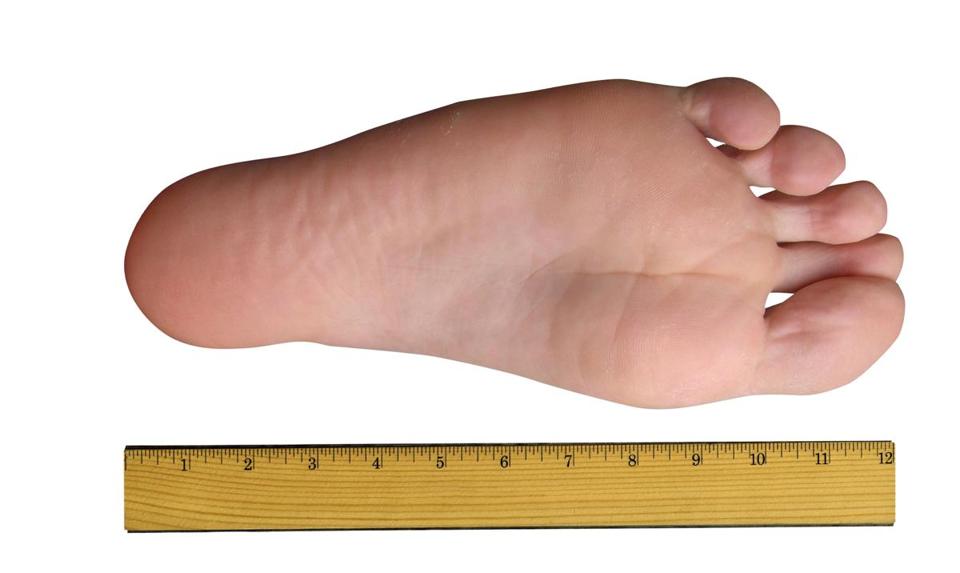

Understanding The Concept: 12 Inches Is A Foot
The measurement of 12 inches equating to one foot is a fundamental concept in the imperial system of measurement. This relationship is not only crucial for everyday tasks such as measuring heights and lengths but also plays a significant role in various fields including construction, engineering, and education. In this article, we will explore the significance of this measurement, its historical background, applications, and much more. Understanding this simple yet important conversion can enhance our comprehension of related concepts in both practical and theoretical contexts.
In addition to the straightforward equivalence of 12 inches to a foot, there are numerous implications and uses for this measurement in our daily lives. Whether you’re measuring furniture, determining the height of a person, or engaging in DIY projects, knowing how to accurately convert between inches and feet is essential. The metric system may be predominant in many parts of the world; however, the imperial system remains widely in use, especially in the United States and the United Kingdom.
This article aims to provide a comprehensive overview of the topic "12 inches is a foot." We will delve into its significance, historical context, practical applications, and even some interesting facts that surround this measurement. By the end, readers will have a deeper understanding of why this simple conversion is more than just a number, and how it influences various aspects of our lives.
Table of Contents
- Historical Background of Measurement Systems
- Importance of Understanding Feet and Inches
- Applications of Feet and Inches in Daily Life
- Conversion Between Inches and Feet
- Common Mistakes in Measurement
- Interesting Facts About Feet and Inches
- Global Usage of Imperial vs. Metric Systems
- Conclusion and Call to Action
Historical Background of Measurement Systems
The concept of measurement has been around since ancient times. The foot as a unit of measurement has a rich history, originating from the human foot itself. Various cultures have had their own definitions of what constitutes a foot, leading to variations across different regions.
1. Early Definitions
Initially, the foot was based on the length of the average human foot. Here are some key historical points:
- The ancient Greeks defined the foot as approximately 12 inches.
- The Romans adopted a similar measurement, which influenced many European standards.
- By the 14th century, the measurement started to standardize into what we recognize today.
2. Standardization of Measurements
In the 19th century, the Imperial System was formalized, and the length of a foot was standardized to exactly 12 inches. This standardization paved the way for consistent measurement practices worldwide.
Importance of Understanding Feet and Inches
Understanding the relationship between inches and feet is crucial for several reasons:
- Accuracy in Measurement: Accurate measurements are essential in fields such as construction, where precision impacts safety and functionality.
- Everyday Use: From determining the height of a person to measuring furniture, this knowledge is practical in daily activities.
- Educational Relevance: This basic understanding is often taught in schools, forming a foundation for more advanced mathematical concepts.
Applications of Feet and Inches in Daily Life
Feet and inches are used in various real-life scenarios. Some applications include:
- Construction: Builders use feet and inches for designing structures and ensuring everything fits perfectly.
- Interior Design: Knowing how to measure spaces in feet helps in planning layouts effectively.
- Sports: Many sports record distances in feet, such as long jump or pole vault.
Conversion Between Inches and Feet
Converting inches to feet is quite simple. The basic formula is:
- 1 foot = 12 inches
- To convert inches to feet, divide the number of inches by 12.
- To convert feet to inches, multiply the number of feet by 12.
For example, if you have 36 inches, to find out how many feet that is:
- 36 inches ÷ 12 = 3 feet
Common Mistakes in Measurement
Even though the conversion seems straightforward, common mistakes can occur:
- Miscalculating when converting between inches and feet.
- Forgetting to convert all measurements to the same unit before performing calculations.
- Using different standards of measurement that may lead to inaccuracies.
Interesting Facts About Feet and Inches
Here are some fun facts related to feet and inches:
- Foot measurements vary slightly in different countries, but the standard foot is universally recognized as 12 inches.
- The term "foot" is derived from the Latin word "pes," which also means foot.
- In terms of human anatomy, the average adult foot is about 10-12 inches long.
Global Usage of Imperial vs. Metric Systems
While the metric system is more widely used globally, the imperial system, including feet and inches, remains prevalent in countries like the United States. Understanding both systems can be beneficial, especially in contexts like trade and travel.
Conclusion and Call to Action
In conclusion, understanding the concept of "12 inches is a foot" is not just about knowing a simple conversion. It encompasses historical significance, practical applications, and the importance of accuracy in measurement. Whether you're involved in construction, education, or everyday life, this knowledge is invaluable.
We encourage you to leave a comment below sharing your experiences with measurements or any questions you may have. Don’t forget to share this article with others who might benefit from understanding the significance of feet and inches!
Thank you for reading, and we hope to see you back on our site for more insightful articles!
Mars Rover Mystery Hatch: Unveiling The Secrets Of The Red Planet
Chris Hansen In Trouble: The Controversies Surrounding The Investigative Journalist
Understanding The Leadership Of The Republic Of Congo President


